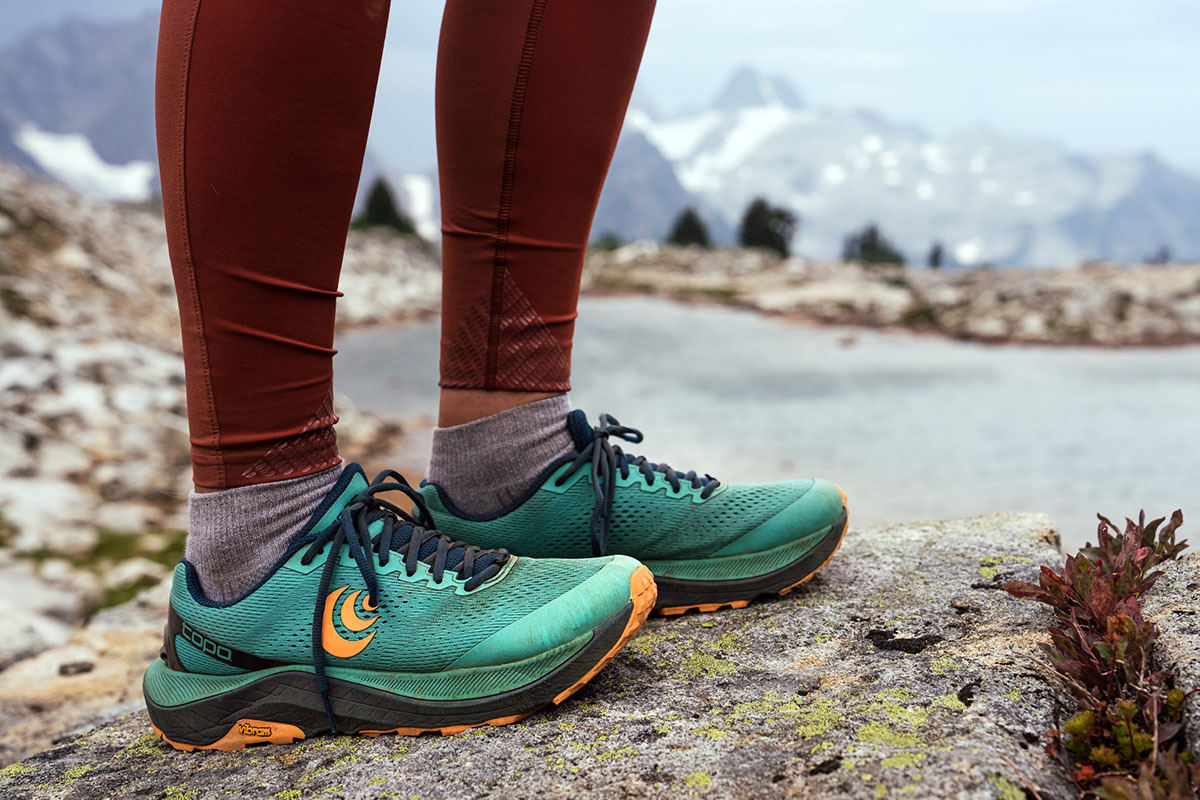
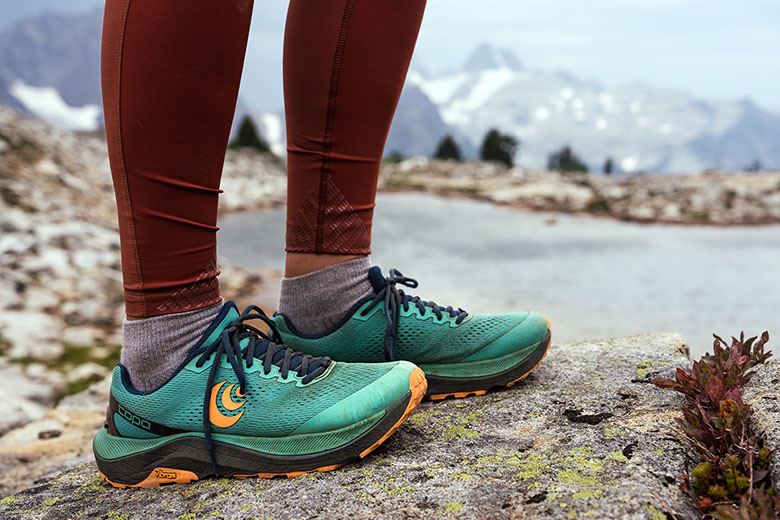
Price: $150
Weight: 1 lb. 0.6 oz. (women’s)
Waterproof: No
What we like: Plush comfort, reliable traction, and great responsiveness at a remarkably low weight.
What we don’t: Very wide toe box detracts from precision and led to some sloppiness over technical terrain; long-term durability is a concern with the mesh-heavy upper.
See the Women's Ultraventure 3 See the Men's Ultraventure 3
Trail running shoes have been gaining popularity among minimalist hikers and backpackers for years, and Topo Athletic’s Ultraventure 3 is a competitive addition to the market. The most cushioned option in their trail collection, the Ultraventure was a great match for a recent backpacking trip in Washington state. The weather and terrain varied considerably throughout our trek, and the Ultraventure handled it extremely well with excellent all-day comfort, reliable traction, and great responsiveness in a competitively light package. The wide toe box led to some sloppiness when navigating tricky sections, and you do sacrifice some stability and durability with the minimalist build. But overall, it’s a very well-executed design that makes fewer compromises than many competitors. Below are our thoughts on the Ultraventure. To see how it stacks up, check out our articles on the best hiking shoes and best women’s hiking shoes.
I’m a big fan of highly cushioned shoes both for running and hiking, and the Topo Athletic Ultraventure 3 felt like a very familiar transition from my Hoka Speedgoats. Like the Speedgoat, the Ultraventure had a decidedly plush and cushy feel out of the box, which wasn’t much of a surprise given its tall stack height (35mm at the heel and 30mm at the forefoot). This does impact ground feel—those coming from traditional hiking shoes or boots likely will find the Ultraventure a little tippy and imprecise—but the trade-off was great underfoot protection and isolation from sharp rocks and roots. It also helped minimize fatigue during long days on the trail. I foolishly didn’t break the shoes in before bringing them on a backpacking trip in Washington’s Necklace Valley, but thankfully, I experienced no comfort-related issues, even under the weight of a full (30ish lb.) backpacking pack.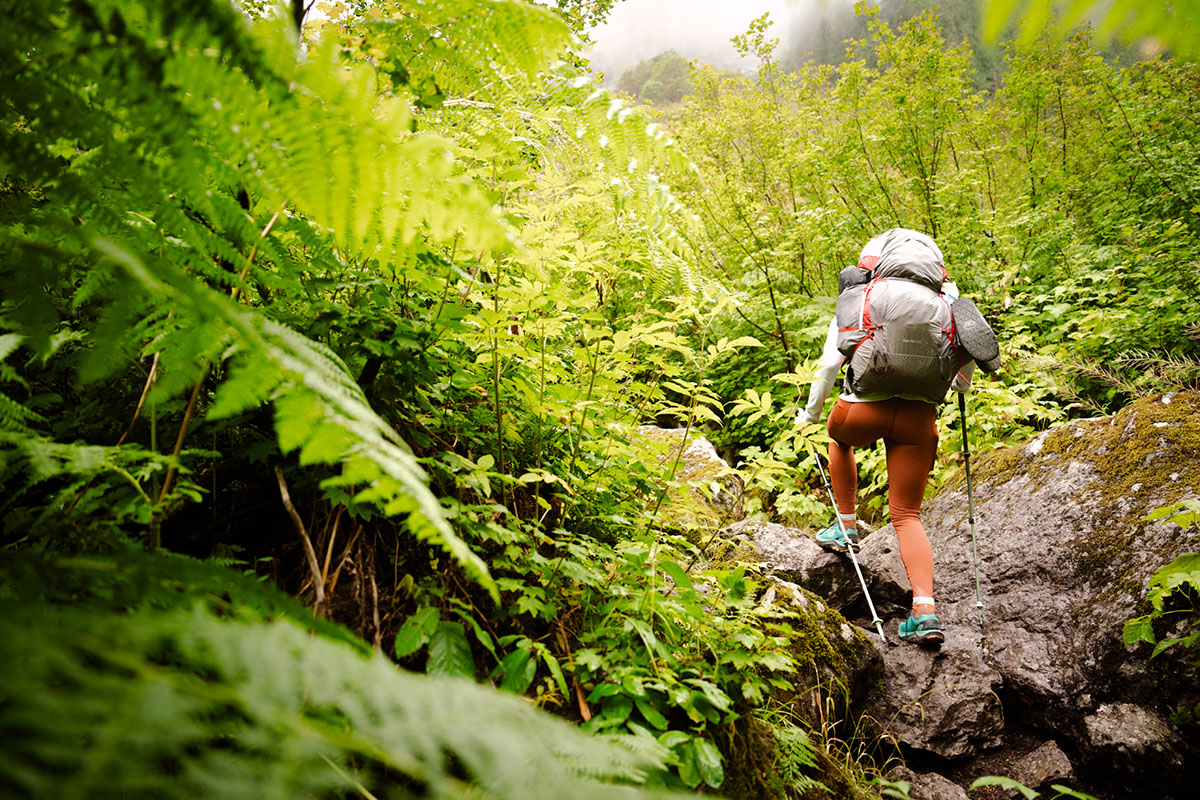
Like many designs popular among long-distance hikers, the Ultraventure 3 boasts a noticeably wide toe box, which allows the foot to stay in its naturally prone and splayed position. I was initially concerned that I ordered the wrong size due to the noticeable amount of room at the front of the shoe, but after our first day on the trail, I was happy to have the extra space: Paired with midweight hiking socks, the Ultraventure struck a great balance between all-day comfort and performance. The lacing system was effective at snugging things down, and I had no trouble with unwanted movement on steep slopes. I did experience some sloppiness—although no proper ankle rolls—when navigating tricky boulder fields, but that was likely pushing the shoes’ limits, and foot fatigue was definitely a factor (I tend to get a little clumsy as the miles add up).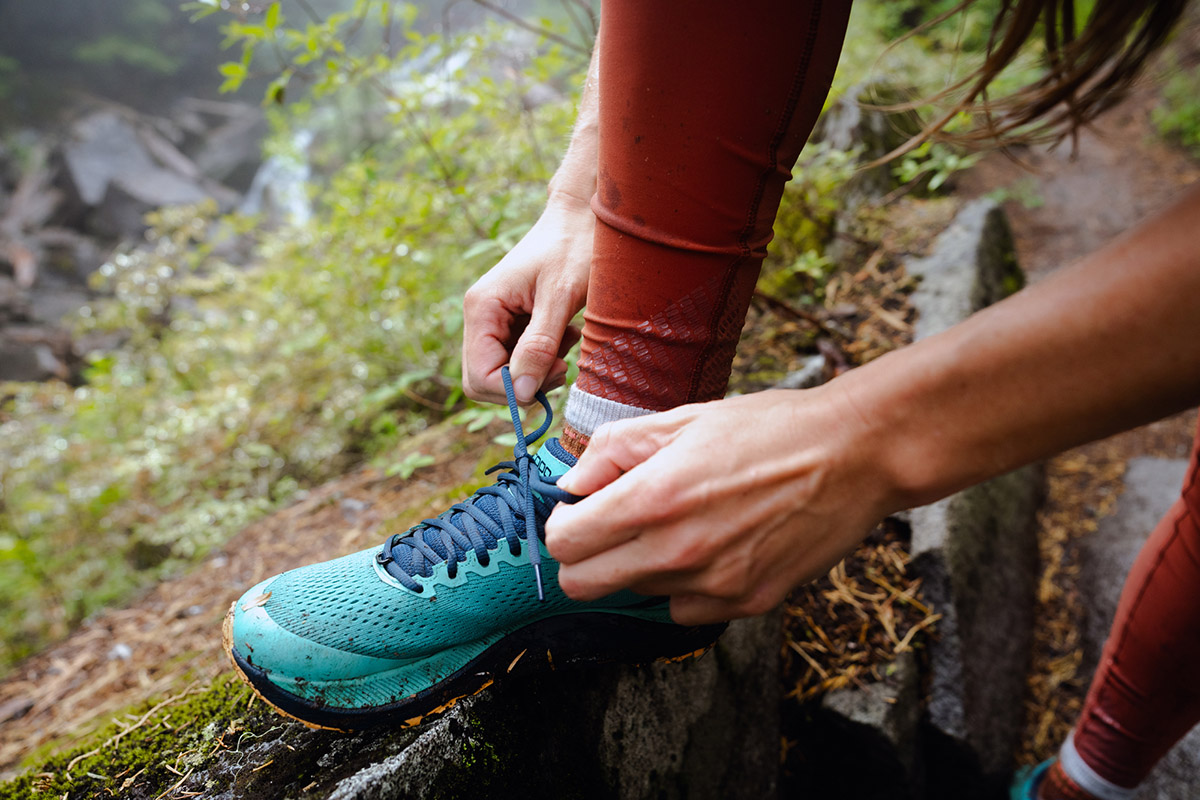
At 1 pound 0.6 ounces per pair (for a women’s size 7 according to Topo’s website), the Ultraventure 3 is easily one of the lightest hiking-capable trail runners on the market. For comparison, it’s a little lighter than similarly intentioned designs like the Hoka Speedgoat 5 (1 lb. 1 oz.), Altra Lone Peak 7 (1 lb. 2.4 oz.), and Brooks Cascadia 17 (1 lb. 3.6 oz.) while considerably undercutting most traditional hiking shoes. Even modern, trail runner-inspired designs like the Salomon X Ultra 4 (1 lb. 6.2 oz.) check in significantly heavier. And importantly, the Ultraventure has a decidedly fast-moving and nimble personality that lines up well with its low weight. I haven’t had a chance to go on a proper trail run with the Ultraventure, but it felt very agile and responsive when breaking into a jog on steep downhill sections of trail while backpacking.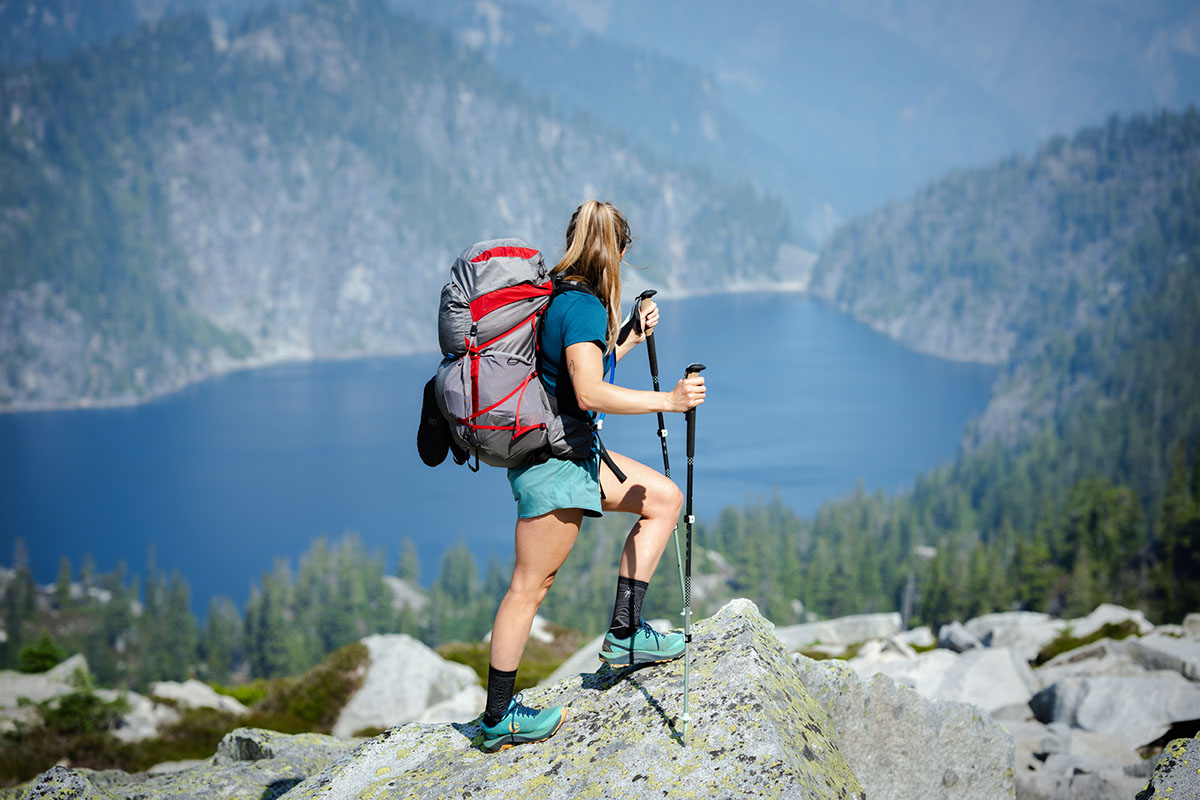
My praise for the Ultraventure 3 continues with traction. For the outsole, Topo opted for a proven Vibram XS Trek Evo compound that provided confidence-inspiring grip across a wide variety of terrain. For reference, the first day of our backpacking trip was very wet, which resulted in a lot of slick rocks and roots. The following day was more favorable but rife with boulder fields and steep sections of loose dirt, while our hike out required navigating wet granite slabs in a rainstorm. Through it all, the Ultraventure never faltered. The deep and widely spaced lugs also strike me as well equipped to handle thick mud, although we experienced surprisingly little of it on our damp trek.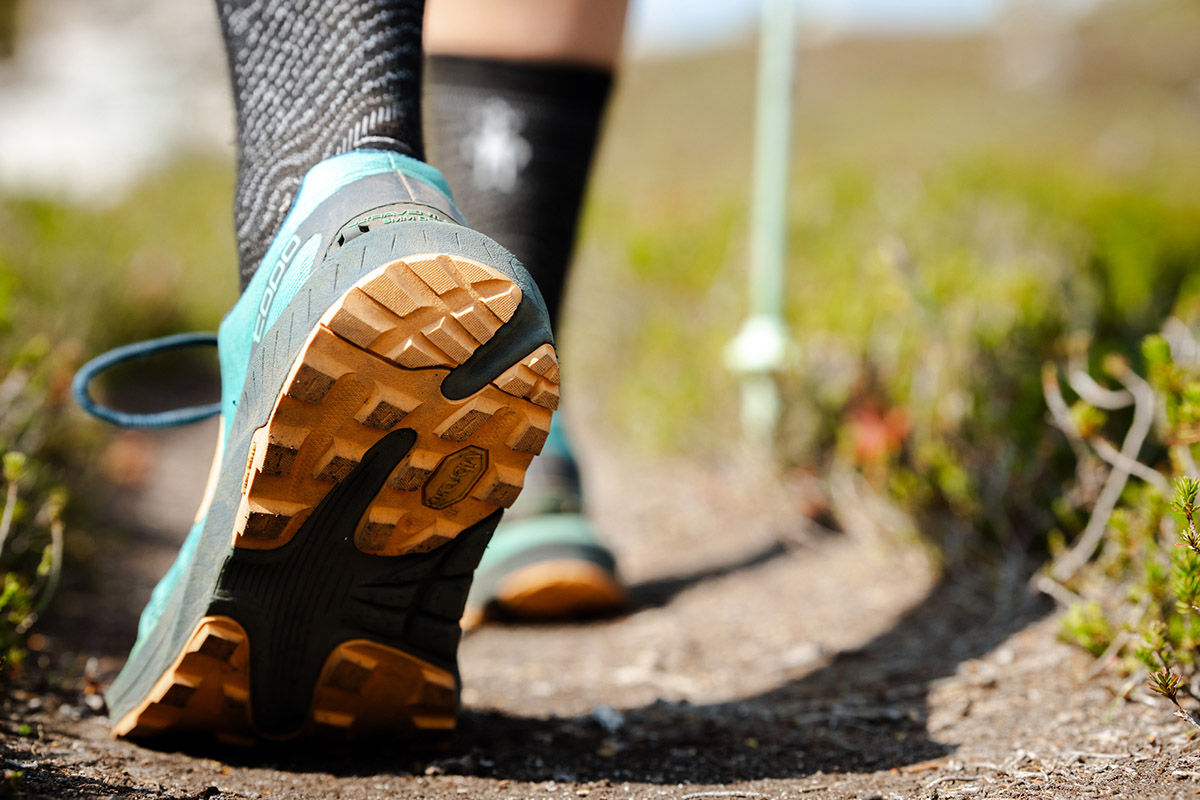
Stability is a common compromise among fast-and-light designs, and the Topo Athletic Ultraventure 3 is no exception. As I mentioned above, the shoes felt a little sloppy when navigating technical terrain like boulder fields, which I attribute to the combination of wide toe box and low collar—not to mention the weight of a full backpacking pack. Hikers who stick to the trail likely won’t mind the lack of support, but there are plenty of more substantial low-top options on the market, from trail runner-inspired designs like the X Ultra 4 mentioned above to beefy models like the La Sportiva Spire GTX. Topo also offers the Ultraventure Pro, which tacks on a TPU heel counter and rock plate for added stability and underfoot protection. In the end, I didn’t find the Ultraventure 3 overly limiting, even when navigating challenging terrain, but hikers who put a premium on support will want to look elsewhere (or step up to a mid-height boot). 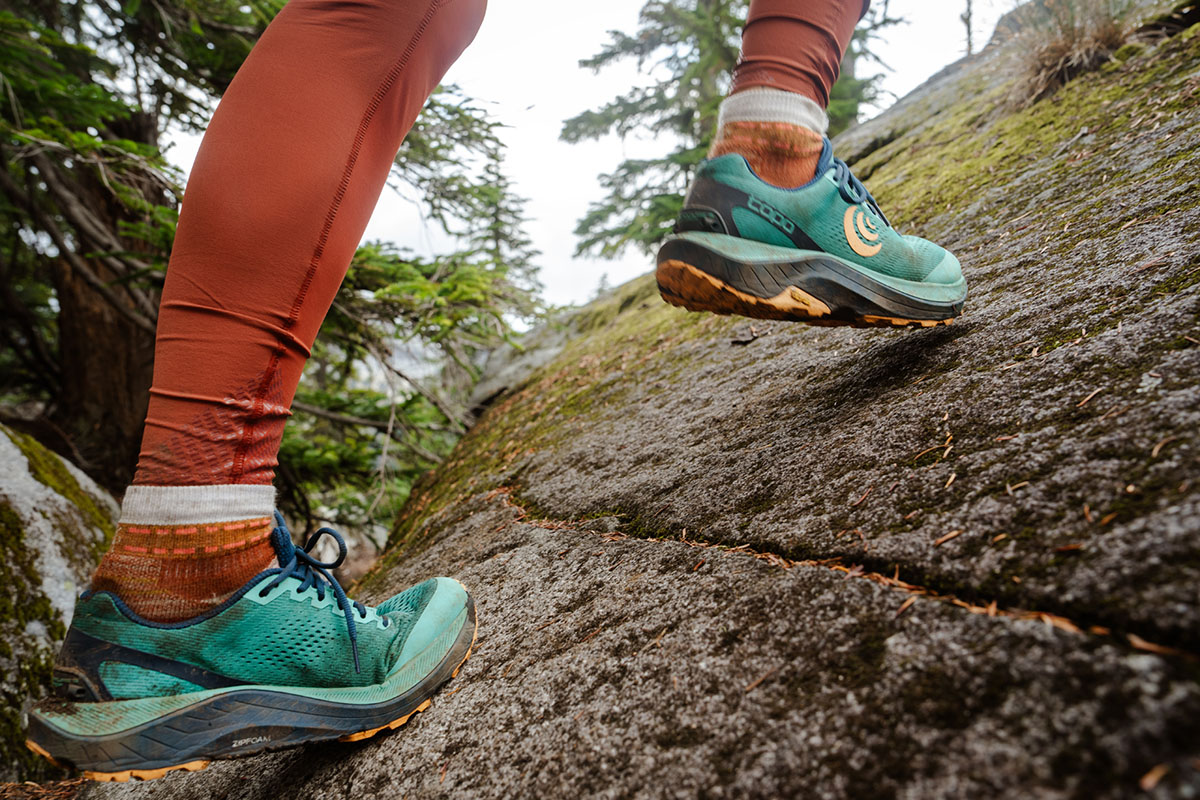
The Ultraventure 3’s mesh-heavy upper is a boon for breathability and a great match for warm-weather hiking. Temperatures were fairly moderate on our backpacking trip—ranging from the mid 40s to upper 60s Fahrenheit—and my feet expectedly stayed very comfortable throughout (for reference, I alternated between light- and midweight merino socks). Rain was the bigger issue than temperature, and the lack of waterproofing resulted in wet socks and damp feet on the first day of our trek. On the bright side, the shoes dried impressively quickly, which is a known benefit to non-waterproof footwear. Many competitors are offered in waterproof versions, but that would have meant reduced breathability (plus, waterproof low-top shoes can still allow water to pour in over the collar during water crossings). And Topo did include a gaiter attachment, which is a nice option for particularly wet conditions.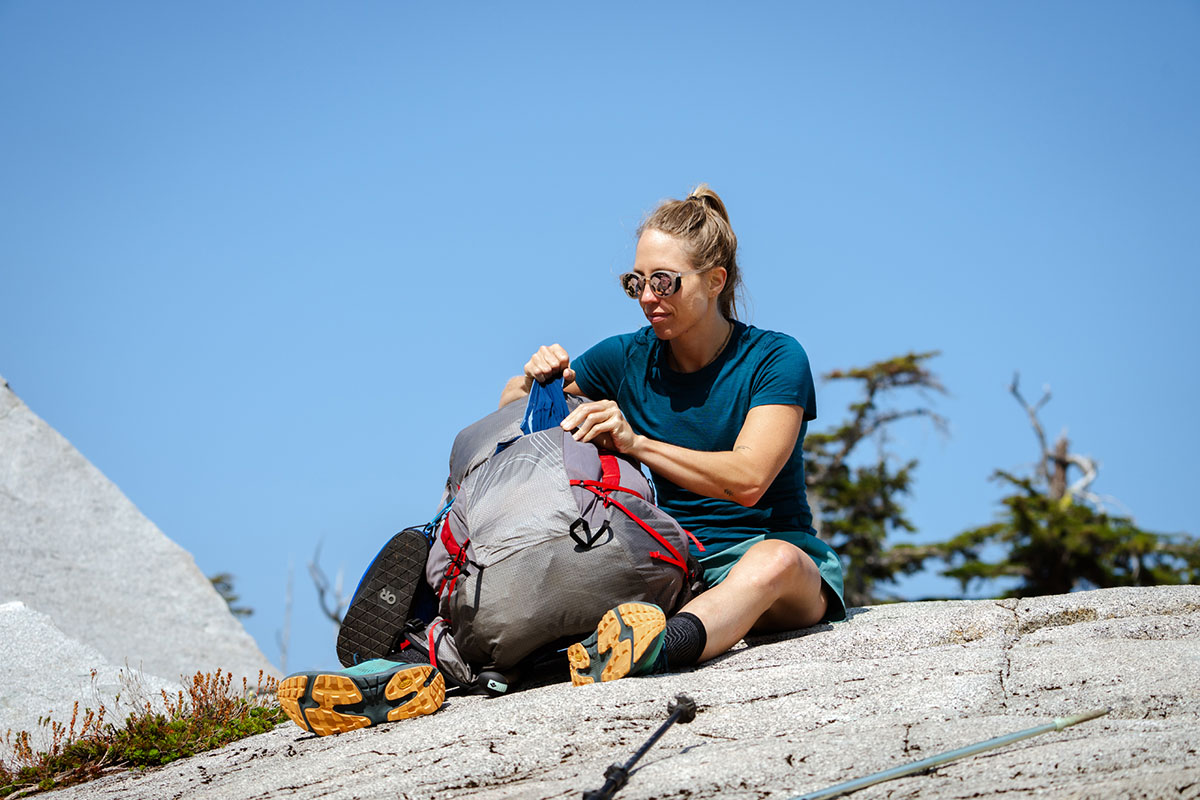
In addition to stability, durability is another area where minimalist designs tend to fall short. In general, I’d say the Ultraventure 3 is on par with most competitors: noticeably less hardwearing than traditional—and much heavier—hiking models but not overly compromised, especially if you stick to the trails. The mesh upper strikes me as particularly susceptible to wear and tear over time, although my pair is holding up well thus far with no tears or abrasion despite frequent contact with sharp rocks and roots. There is some light scuffing along the midsole from squeezing between rocks, but it’s purely cosmetic. The toe cap is also fairly thin and streamlined for a hiking shoe but did an adequate job of taking the sting out of direct hits on our trek. To sum things up, the Ultraventure 3 feels reasonably durable given its impressively low weight, but it’s important to set realistic expectations with any fast-and-light design. 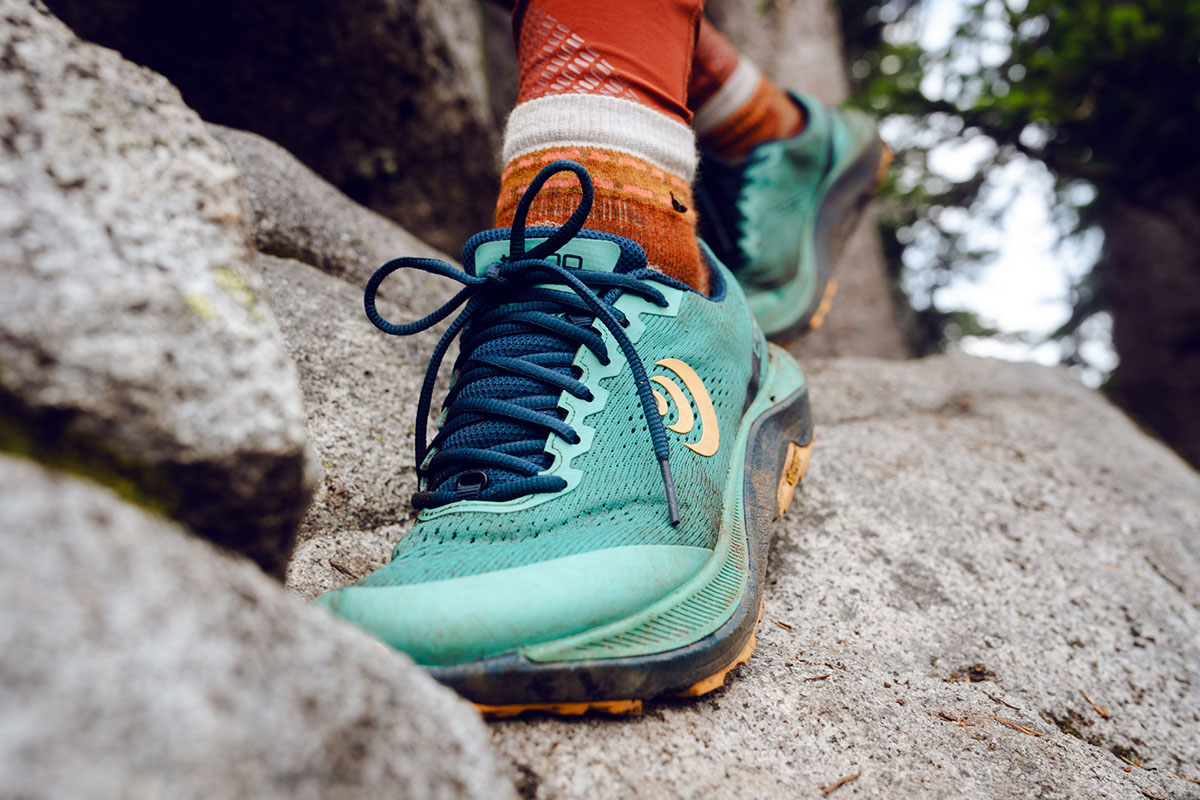
In my usual women’s size 8.5, the Topo Athletic Ultraventure 3 was spot-on lengthwise but decidedly roomy in the toe box (for reference, I have fairly average feet that aren’t particularly wide or narrow). As I mentioned above, this allowed my toes room to splay and swell throughout the day, which was great for minimizing fatigue on our backpacking trip. However, the flip side was that the shoes felt a little sloppy when covering technical ground like boulder fields and steep, root-ridden sections of trail. I do think Topo could have made the toe box a little narrower without compromising on all-day comfort—by comparison, my Hoka Speedgoats in the same size have a little less room at the front but have never felt restrictive. The good news is that I was able to achieve a fairly secure all-around fit with the Topo’s well-executed lacing system, and I didn’t experience any blisters or hotspots from unwanted movement inside the shoes.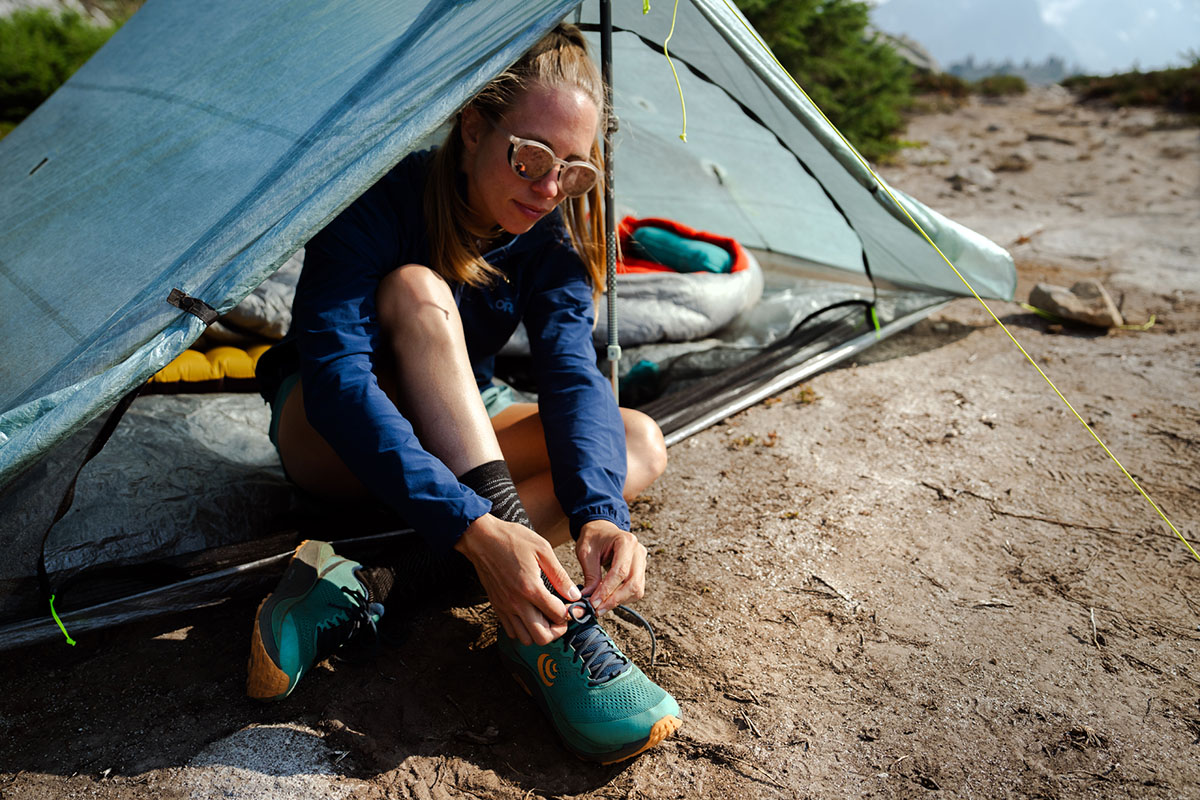
I brought the women’s version of the Ultraventure 3 to Washington’s Necklace Valley for testing, and it’s also sold in a men’s model for the same price. Comparing the two, the men’s Ultraventure 3 is slightly heavier at 1 pound 4.4 ounces (per pair in a size 9), sold in different colorways, and offered in sizes from 7 to 15 (the women’s sizes range from 6 to 12). Zooming out to the wider Ultraventure collection, Topo offers the Ultraventure Pro for men and women, which costs the same as the Ultraventure 3 at $150 but has a shorter stack height (30mm at the heel and 25mm at the forefoot), includes a TPU heel counter and rock plate for added protection and stability, boasts a more robust upper, and utilizes Vibram’s well-loved Megagrip outsole—all for around the same weight. The Pro’s biggest sacrifices are breathability and plushness (if those are priorities, go with the Ultraventure 3), but both are extremely capable lightweight designs. 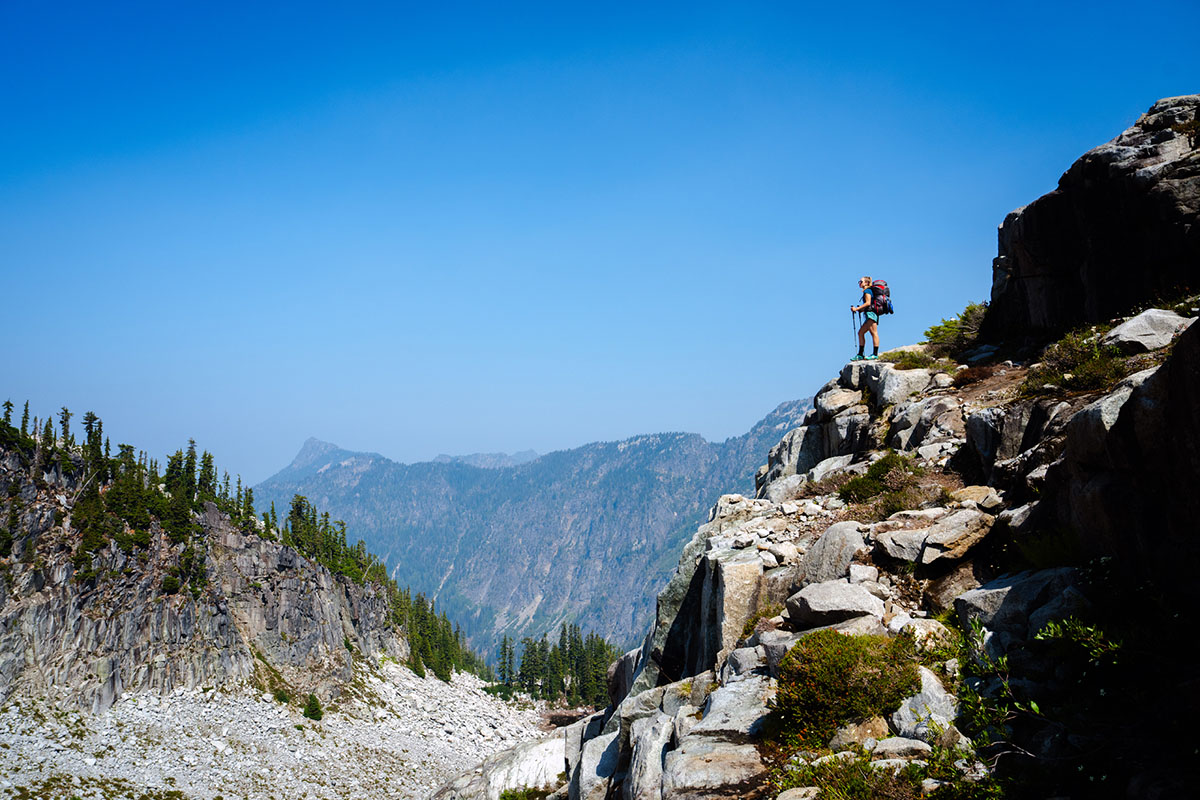
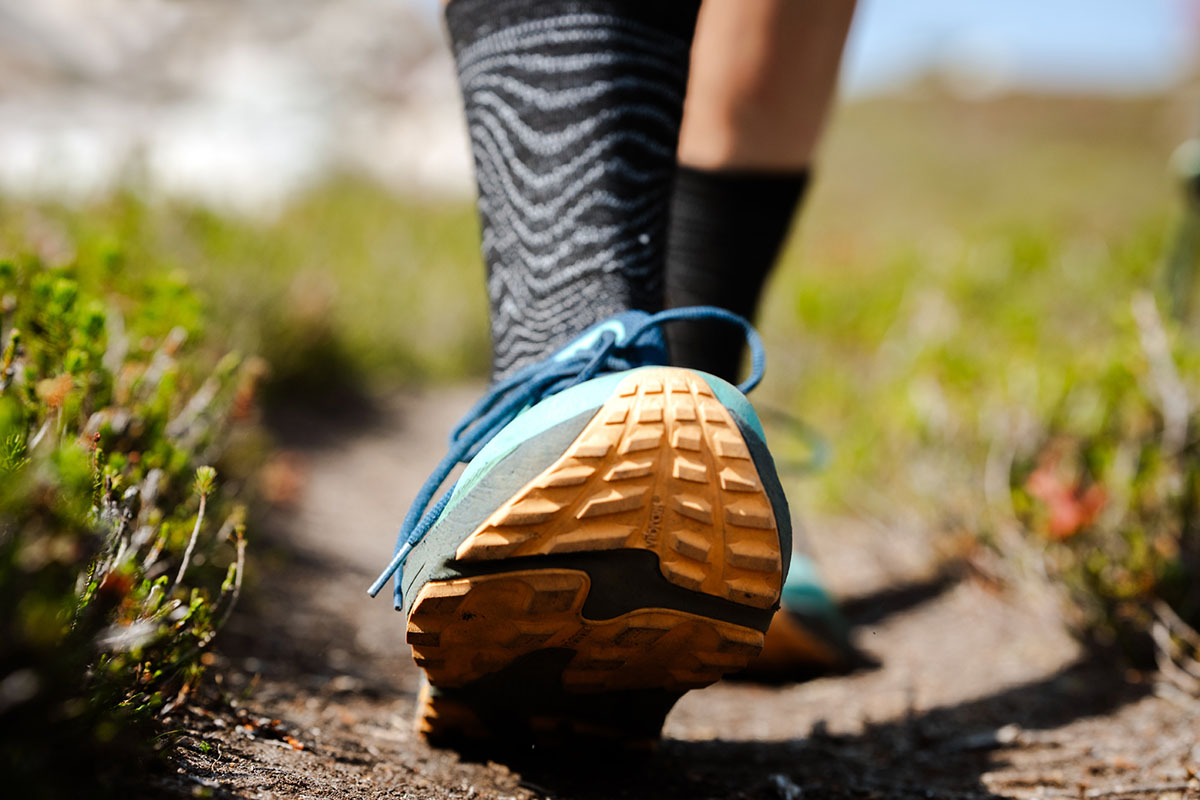
| Shoe | Price | Type | Weight | Stack height | Upper |
|---|---|---|---|---|---|
| Topo Athletic Ultraventure 3 | $150 | Hiking shoe/trail runner | 1 lb. 0.6 oz. | 35mm/30mm | Mesh |
| Hoka Speedgoat 5 | $155 | Trail runner | 1 lb. 1 oz. | 31mm/27mm | Mesh |
| Altra Lone Peak 7 | $150 | Trail runner | 1 lb. 2.4 oz. | 25mm/25mm | Mesh |
| Danner Trail 2650 | $170 | Hiking shoe | 1 lb. 2 oz. | Unavailable | Leather/textile |
| Topo Athletic Terraventure 4 | $135 | Hiking shoe/trail runner | 1 lb. 2.2 oz. | 25mm/22mm | Mesh |
The Ultraventure 3 joins a very competitive league of light but capable designs for minimalist hikers and backpackers. One of our longtime favorites is the Hoka Speedgoat, which is now in its fifth iteration and a great match for those who prioritize all-day comfort and responsiveness. Like the Ultraventure 3, the Speedgoat is competitively light at 1 pound 1 ounce, features a thick midsole, and offers superb grip with Vibram Megagrip tread. It also stacks up well in breathability with a thin, mesh-heavy upper, and Hoka offers a waterproof Gore-Tex version for those who frequently get out in wet weather. The biggest difference between the two is fit: The Hoka has a fairly standard-sized toe box, which translates to more confidence in difficult terrain—and a better fit for those with narrower feet. The Topo is the slightly plusher option and will save you $5, but there’s a reason the Speedgoat has such a loyal following: It’s a superb trail runner that transitions very well to hiking.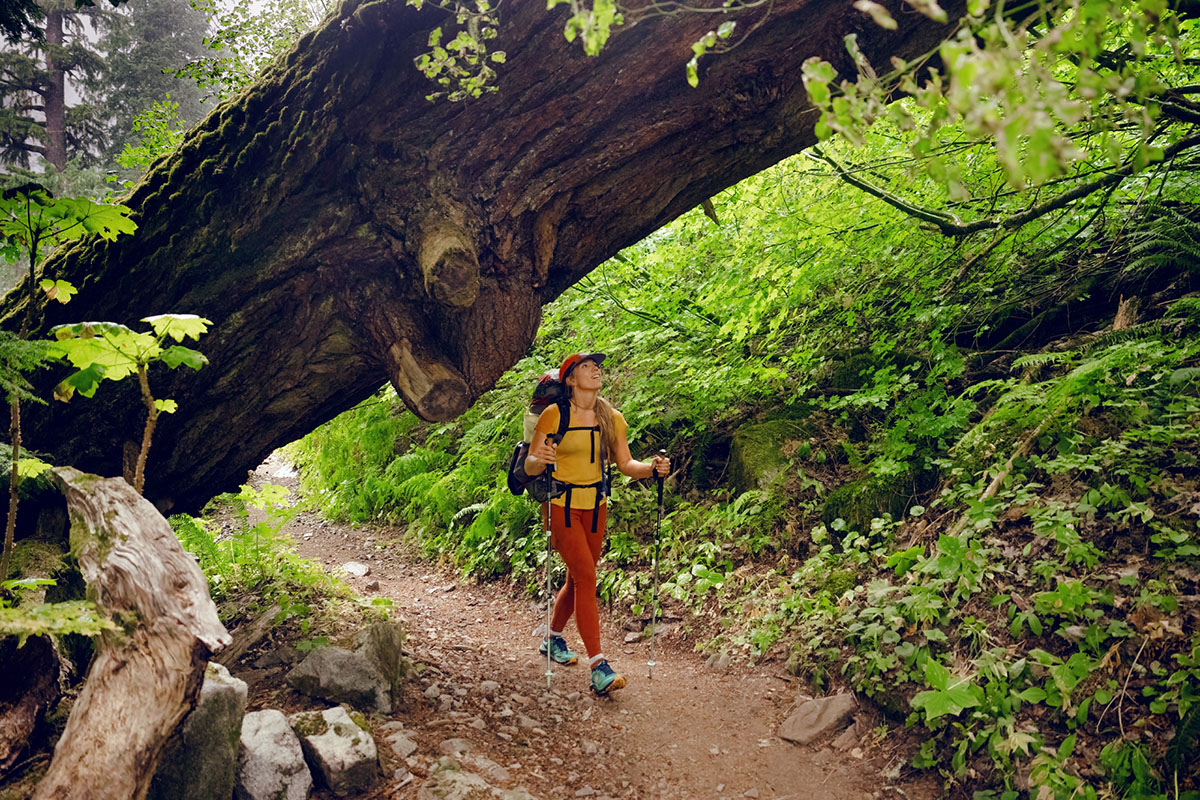
Next up is another popular thru-hiking design: Altra’s Lone Peak 7. For a couple ounces more than the Ultraventure, the Lone Peak boasts Altra’s zero-drop shape that’s intended to mimic your foot’s natural position by keeping your heel and forefoot at the same height. It’s a fairly polarizing design: We personally found the Lone Peak to be fairly sluggish and under-cushioned (you get just 25mm of stack height), but many hikers find the benefits in all-day comfort worth it. The rest of the build compares similarly to the Ultraventure, including a wide toe box, gaiter attachment, and breathable upper that’s quick to dry. Altra also included a rock plate underfoot, resulting in a nice boost in protection. In the end, a decision will come down to preferences on fit and feel: The Ultraventure offers a plusher and more responsive ride—along with better traction—but the Lone Peak is slightly more planted and available in several versions, including a waterproof low-top model and mid-height boots.
For those looking for a step up in protection and support without too much of a weight penalty, Danner’s Trail 2650 is more of a traditional hiking shoe and hits a really desirable balance for many. For just 1.4 ounces more per pair, the Trail 2650 is similarly comfortable out of the box, offers comparable grip with a Vibram outsole, and tacks on upgrades like a beefy toe cap, heel counter, and TPU shank for improved protection, support, and stability. The Danner will cost you an additional $20 and runs noticeably warmer than the Ultraventure due to its leather/textile upper, but it offers a much more traditional feel for those who are new to hiking or coming from mid-height boots. Minimalists who prioritize cushion and flexibility—and are willing to deal with the inherent downsides outlined above—will be better off saving with the Topo.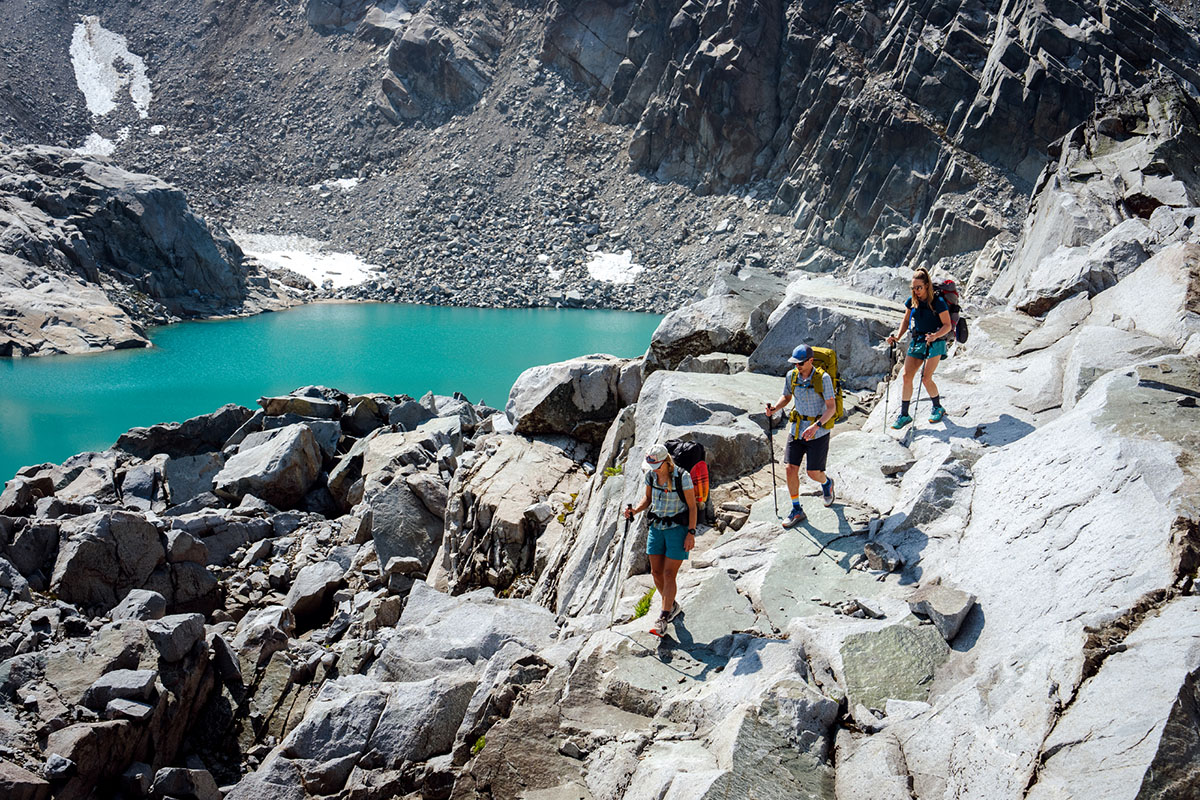
Last but not least is an in-house design to consider: Topo Athletic’s Terraventure 4. Along with sharing a similar name, the Terraventure has a good amount in common with the Ultraventure, including a wide toe box for all-day comfort, sticky Vibram outsole, gaiter attachment, and competitively low weight (1 lb. 2.2 oz.). However, the Terraventure sits noticeably closer to the ground (25mm at the heel and 22mm at the forefoot), which results in a more locked-in and planted feel. You also get a rock plate for additional protection underfoot. Taken together, the Terraventure is the better match for technical terrain that involves off-trail hiking, scrambling, or navigating obstacles like rocks and roots. On the flip side, the Ultraventure gets the clear edge in long-distance comfort for those who stick to mellow to moderate terrain.